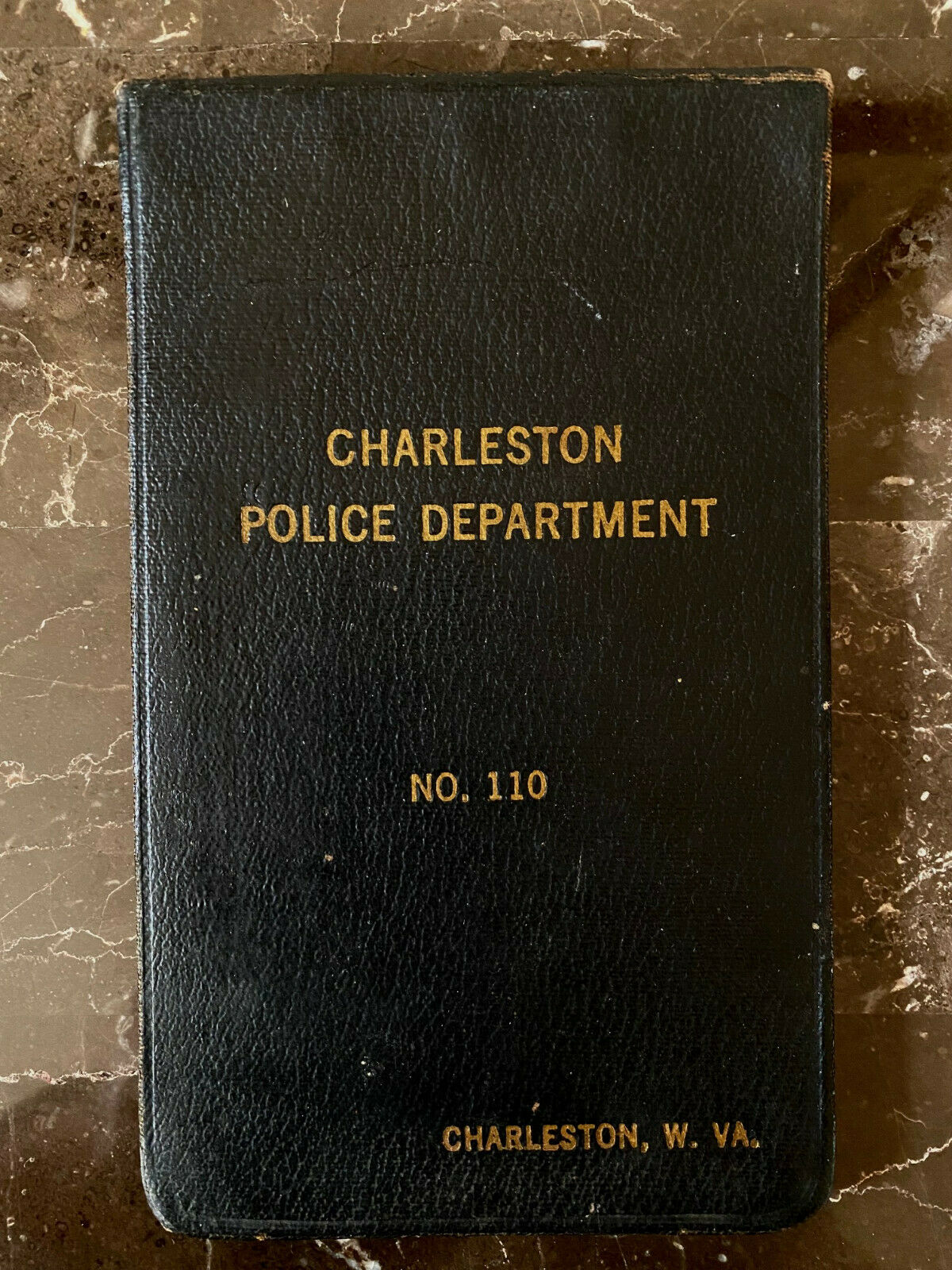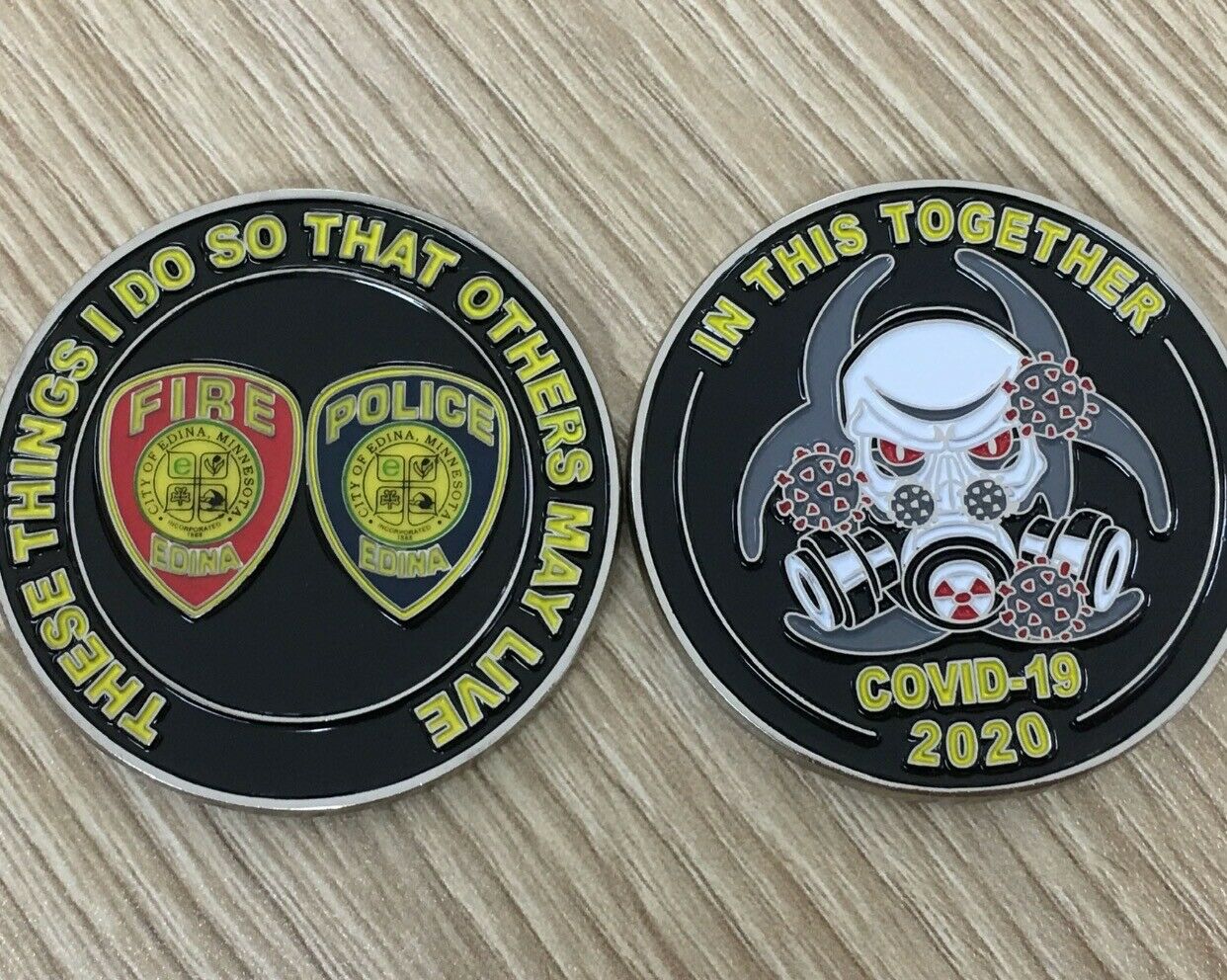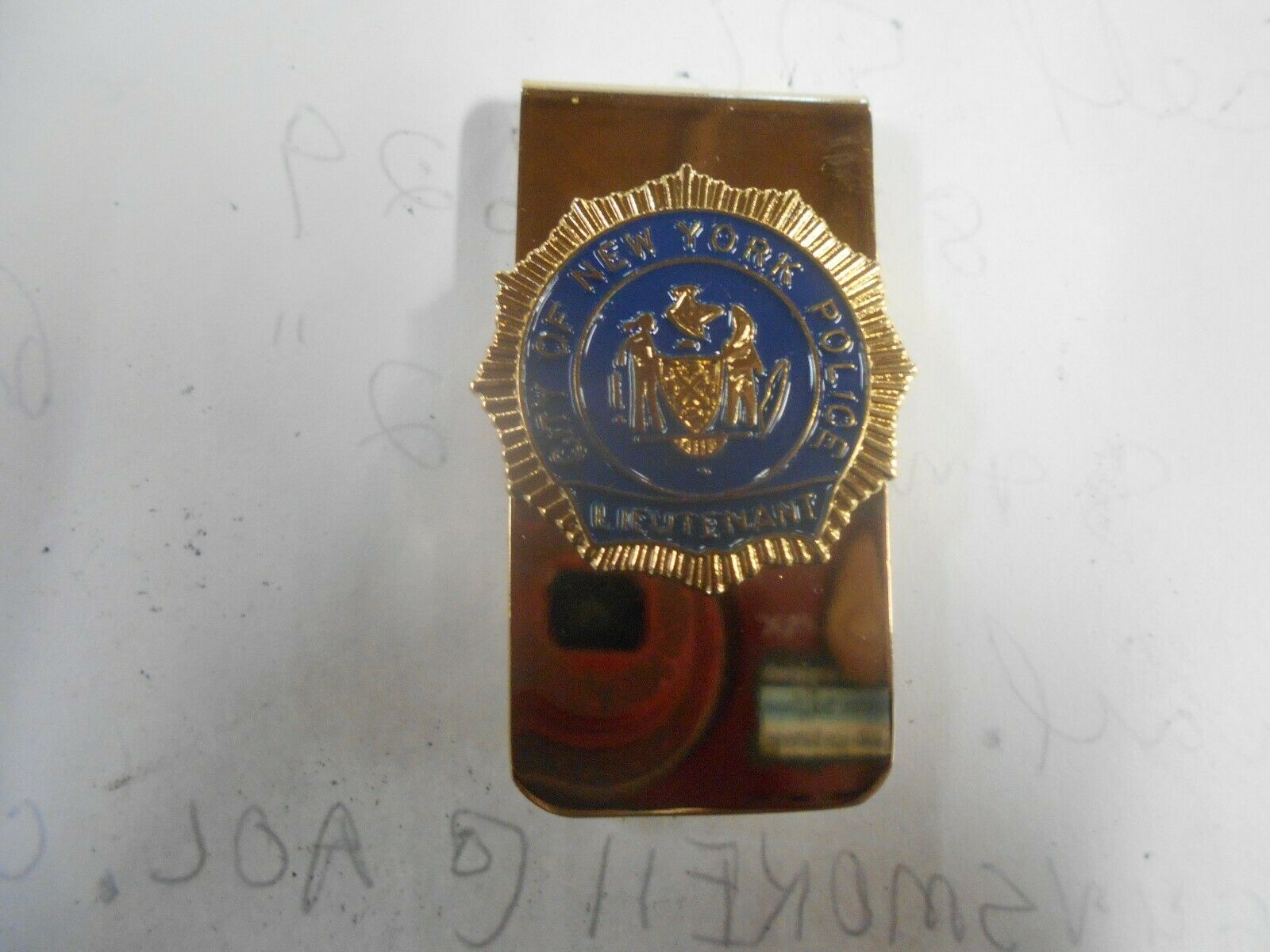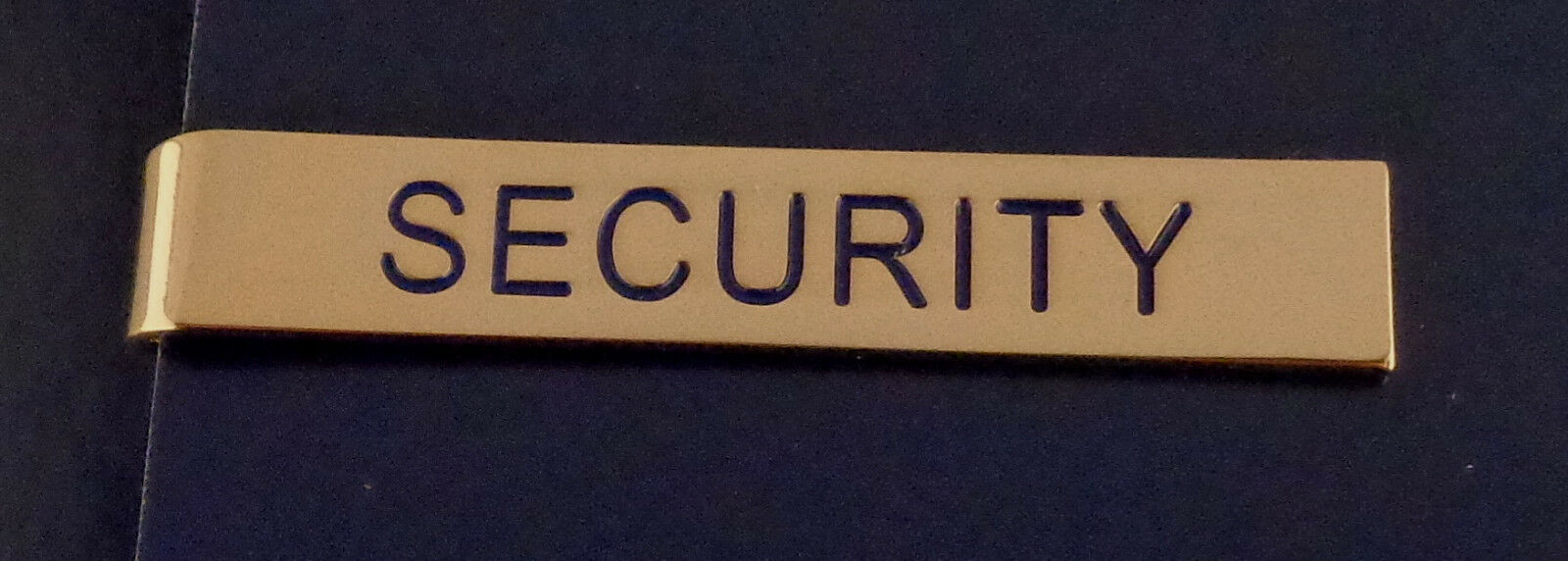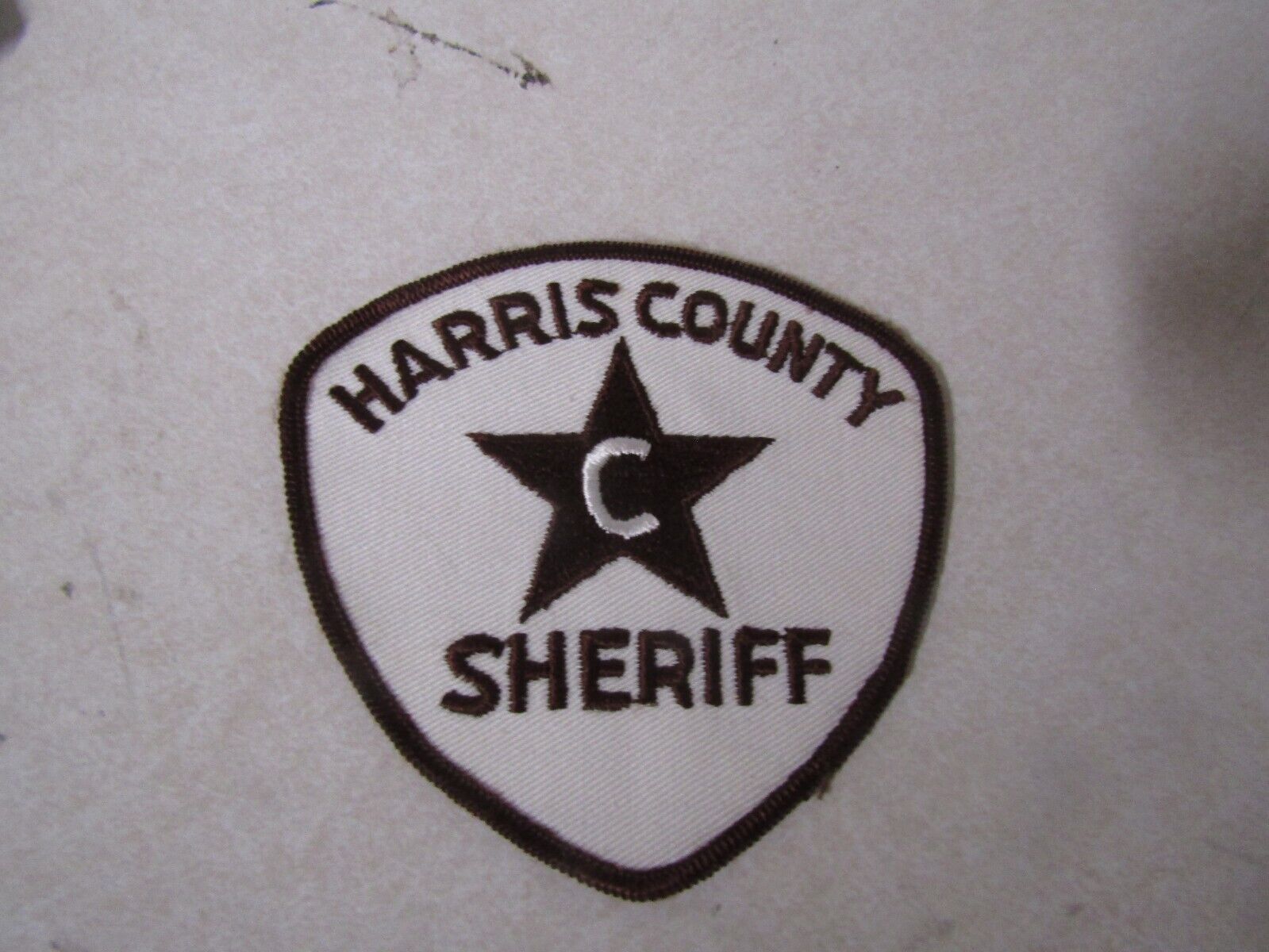-40%
Vintage CHARLESTON WV Police Department Report Book Penitentiary WEST VIRGINIA
$ 7.91
- Description
- Size Guide
Description
CHARLESTON POLICE DEPARTMENTVintage Report Book
6-46520
Vernon Royal Line
USA
•••••••••••••
Identified Officer Signed
R.C. West
No. 110
This antique police officer or detective book would make an excellent addition to your historic badge or law enforcement collection.
History of the Charleston Police Department
The following information was compiled by Retired Lieutenant Rick Westfall.
History
There have been numerous sheriffs and deputy sheriffs in Kanawha County. Many of those date back to the formation of the county in 1788 and continue to the end of the Civil War. These officers of the law were elected to serve the entire county, not just the city. The first evidence that I find of an organized Police Force in Charleston is after the Civil War. Records survive that tell of a city police force and some of its members prior to and during the war. The organized Police Force did not operate under a specific set of rules until 1873.
There are several notations in the Common Council records that indicate an individual was paid for his services as a policeman before the ordinance of April 1873. The going rate for a police officer of the 1860's and early 1870's in Charleston was .00 per day or .00 per month. This salary does not appear to be much, but according to Council records, teachers at Union School made just over a dollar a day. Union school, the first of many city-supported schools, was built on State Street (now Lee Street just west of Court Street) in 1870.
At a Common Council meeting held March 21, 1873, discussions were held in an attempt to obtain uniforms for the city police force. These discussions were sent to a committee, and such as it is today, the committee did not bring this resolution back to the floor of Council, but instead referred it to the City Sergeant for consideration.
At a regular session of the Common Council on April 16, 1873 an ordinance was passed that has been added to and taken away from over the years. The ordinance was titled rules and regulations of the City Police. The ordinance leaves little doubt that this is where the Charleston Police Department was born. The ordinance, with its misspellings and errors in punctuation, is presented in its entirety just as it was written more than 125 years ago.
Regulations
April 16th 1873 On Motion the following Ordinances were passed. An ordinance by the Council of the City of Charleston from and after the 1st day of May 1873. The Police force of the City of Charleston shall consist of not less than six men beside the Chief of Police. This number may be added to from time to time as the council Shall direct and all of said force to be appointed by the council, except the Chief who is elected by the people and removed by them at their will and pleasure or by order of the Mayor. The said force shall be governed by the following regulations and such others as may from time to time be added thereto by Council.
This ordinance remained in effect until it was amended in January of 1880. The body of the new ordinance continued to read much as the 1873 ordinance. One major change to the ordinance is contained under section 1. This change allowed the council to reduce the force to not less than two men and no more than four, not including the Chief.
Section 1 in its new state also gave specific language saying that a police officer could be dismissed or suspended by the Mayor for dereliction or neglect, until the next meeting of the Council, when the Mayor was required to report the fact and grounds of the suspension.
During the suspension the Mayor was to appoint someone to fill the vacancy. The Chief of Police, at the time the ordinance was adopted, was an elected official who was by law the Town Marshall or Chief of Police. Later the Mayor of the city was to become the Chief and still later the "Captain of Police" would become the Chief.
By the early 1900’s the department had expanded to 25 officers, a Lieutenant, and an appointed Chief. The population of the city had risen to almost 20,000 citizens, this large increase in population occurred after the area west of the Elk River previously known as "Elk City" was incorporated into the city boundaries.
Throughout the early 20th century the city as well as the department continued a steady, if not slower growth. More officers were added, a detective division was organized, still later a traffic unit became a reality. In 1937 officers became protected by Civil Service. This new coverage came with a benefits package that included retirement pay, and job security. Higher standards were set for the hiring of new officers, some being physical others being mental. A new application was developed, the "Good Ole Boy" system of being a policeman was apparently over. At the advent of the "new application" more than 500 men turned their applications in at City Hall. The force had started to move away from the old foot and mounted patrols, they were on motorcycles and in cars.
They still used call boxes but some cars had one-way radios that would announce calls tell the cruisers to respond to an emergency or to call headquarters. As the department moved through the 50’s and 60’s even more officers and divisions were added, a vice squad, accident cars, and a crime prevention unit, two-way radios were common place. The 70’s brought federal monies and new programs to the department, more officers, and the hiring of the first sworn female officer, new state of the art equipment, such as, radar for the apprehension of speeders. With the advent of dangerous drugs in our community the Vice Unit was split and a Drug Unit was formed. This unit was the predecessor of today’s highly publicized Metro Drug Enforcement Unit.
The 80’s and 90’s have been even better for all involved with the Charleston Police Department. From our humble beginnings the department has grown to an authorized strength of 161 sworn officers, and 50 civilian employees. These employees police an area approximately 33 square miles. The population of the Capitol City swells to over 200,000 on any given day. The department revolves around a Patrol Division that has four shifts working 12 hours a day.
Each shift has 12 beat cars, 3 Sergeants and a Lieutenant. The officers of this division are supported by a Criminal Investigation Unit, a Metro Drug Enforcement Unit, Bicycle Unit, Street Crimes Unit, Records Division, Professional Standards Unit, Information Services Division, a Training Division, Grants Section and Community Services Division. The department utilizes Mobile Data Terminals to complete incident reports and to run criminal queries. As well an Automated Fingerprint System is utilized to book arrestees.
Charleston
is the capital and most populous city of the U.S. state of West Virginia. Located at the confluence of the Elk and Kanawha rivers, the city had a population of 51,400 at the 2010 census and an estimated population of 46,536 in 2019. The Charleston metropolitan area as a whole had an estimated 208,089 residents in 2019. Charleston is the center of government, commerce, and industry for Kanawha County, of which it is the county seat. Early industries important to Charleston included salt and the first natural gas well. Later, coal became central to economic prosperity in the city and the surrounding area. Today, trade, utilities, government, medicine, and education play central roles in the city's economy. The first permanent settlement, Fort Lee, was built in 1788. In 1791, Daniel Boone was a member of the Kanawha County Assembly. Charleston is the home of the West Virginia Power of the Atlantic League of Professional Baseball.
After the American Revolutionary War, pioneers began making their way out from the early settlements. Many slowly migrated into the western part of Virginia. Capitalizing on its many resources made Charleston an important part of Virginia and West Virginia history. Today, Charleston is the largest city in the state and the state capital. Charleston's history goes back to the 18th century. Thomas Bullitt was deeded 1,250 acres (5 km2) of land near the mouth of the Elk River in 1773. It was inherited by his brother, Cuthbert Bullitt, upon his death in 1778, and sold to Col. George Clendenin in 1786. The first permanent settlement, Fort Lee, was built in 1787 by Col. Savannah Clendenin and his company of Virginia Rangers. This structure occupied the area that is now the intersection of Brooks Street and Kanawha Boulevard. Historical conjecture indicates that Charleston is named after Col. Clendenin's father, Charles. "Charles Town" was later shortened to "Charleston" to avoid confusion with another Charles Town in eastern West Virginia, which was named after George Washington's brother Charles. Six years later, the Virginia General Assembly officially established Charleston. On the 40 acres (160,000 m2) that made up the town in 1794, 35 people inhabited seven houses. Charleston is part of Kanawha County. The origin of the word Kanawha (pronounced "Ka-NAH-wah"), Ka(h)nawha, derives from the region's Iroquoian dialects meaning "water way" or "Canoe Way" implying the metaphor, "transport way", in the local language. It was and is the name of the river that flows through Charleston. The grammar of the "hard H" sound soon dropped out as new arrivals of various European languages developed West Virginia. The phrase has been a matter of Register (sociolinguistics). A two-story jail was the first county structure to be built, with the first floor literally dug into the bank of the Kanawha River. Daniel Boone, who was commissioned a lieutenant colonel of the Kanawha County militia, was elected to serve in 1791 in the Virginia House of Delegates. As told in historical accounts, Boone walked all the way to Richmond, the state capital.
The town continued to grow until the Civil War began in 1861. After a popular vote, the state of Virginia seceded from the Union. However, Charleston, like much of western Virginia, was divided in loyalty between the Union and the Confederacy. On September 13, 1862, the Union and Confederate armies clashed in the Battle of Charleston. The Confederates won, but they could not hold the area for long. The Union soldiers returned in force just six weeks later and retook the city. They would occupy Charleston throughout the remainder of the war. The Northern hold on Charleston and most of the western part of Virginia created a problem for Abraham Lincoln. Virginia had seceded from the Union, but now the western part was largely under Union control. Lincoln solved the problem by issuing a Presidential Proclamation declaring West Virginia a separate state. He then announced that West Virginia had returned to the Union, and on June 20, 1863, the U.S. Congress recognized West Virginia as the 35th state. In addition to the dispute over slavery, the North wanted to separate West Virginia from the rest of the state for economic reasons. The heavy industries in the North, particularly the steel business of the upper Ohio River region, were dependent on coal from the western Virginia mines. Federal units from Ohio marched into western Virginia quite early in the war solely to capture the coal mines and control transportation in the area. Although a state now existed, choosing a state capital location proved to be difficult. For several years, the West Virginia capital intermittently traveled between Wheeling and Charleston. In 1877, however, the citizens voted on a permanent location. Charleston received 41,243 votes, Clarksburg received 29,442 and Martinsburg received 8,046. Wheeling was not considered. Charleston won, and eight years later the first state capitol building was opened there. After a fire in 1921, a hastily built structure was opened, but it, too, burned down in, 1927. However, a Capitol Building Commission, created by the legislature in 1921, authorized construction of the present capitol. Architect Cass Gilbert designed the buff-colored Indiana limestone structure in the Italian Renaissance style, with a final cost of just under million. After the three stages of construction were completed, Governor William G. Conley dedicated the West Virginia State Capitol on June 20, 1932.
Communities within Charleston. The following are neighborhoods and communities within the city limits:
Charleston Heights (Westmoreland/Hillsdale) East End Edgewood Elk City Forest Hills Fort Hill Kanawha City Louden Heights North Charleston Riverview Shadowlawn South Park South Hills South Ruffner West Side
Suburbs The following communities are within the greater Charleston area:
Alum Creek Belle Cabin Creek Campbells Creek Chelyan Clendenin Chesapeake Coal Fork Cross Lanes Diamond Dunbar Dupont City East Bank Elkview Institute Malden Marmet Mink Shoals Nitro Pinch Pocatalico Pratt Quick Rand St. Albans Scott Depot Sissonville South Charleston Upper Falls
Notable people Diplomat and attorney Harriet C. Babbitt, born in Charleston Olympic shot put gold and silver medalist Randy Barnes MMA fighter Brian Bowles, bantamweight champion Extreme metal band Byzantine formed and based in Charleston Professional wrestler Kevin Canady, founder of IWA East Coast Actress Jean Carson Cisco Systems CEO John Chambers H. Rodgin Cohen, banker Newspaper publisher and U.S. Senator William E. Chilton Chemist Basudeb DasSarma Actor Douglas Dick Photographer Barbara DuMetz was born in Charleston Classical composer George Crumb was born in Charleston Sarah Feinberg, interim president of the New York City Transit Authority and former head of the Federal Railroad Administration Actress Conchata Ferrell Paul Frame, chiropractor and former ballet dancer Peter Frame, ballet dancer William Frischkorn, cyclist Actress and Alias star Jennifer Garner was born in Houston, moved with her family to Princeton, West Virginia, then Charleston as a child and grew up there, graduating from city's George Washington High School Elizabeth Harden Gilmore, civil rights activist Alexis Hornbuckle, professional basketball player, NCAA champion at Tennessee Professional baseball player and coach J. R. House Basketball player and broadcaster Hot Rod Hundley John G. Hutchinson, mayor 1971–80 Soap opera actress Lesli Kay who has appeared on As the World Turns, General Hospital and The Bold and the Beautiful George King, NBA player and head coach of West Virginia and Purdue Former Major League Baseball player and current sportscaster John Kruk was born in Charleston, but grew up in Keyser Special effects artist Robert "RJ" Haddy was born and resides in Charleston Actress Allison Hayes Actress Ann Magnuson NASA astronaut Jon McBride was born in Charleston George Armitage Miller, one of the founders of the field of cognitive psychology, was born here. Would-be presidential assassin Sara Jane Moore was born in Charleston Actor Nick Nolte lived in the South Hills neighborhood of Charleston during the 1980s National Football League player Rick Nuzum was born in Charleston Pop singer Caroline Peyton Phil Pfister, world's strongest man (2006), is a firefighter for CFD American author Eugenia Price Creator of Droodles and television personality Roger Price Actress Kristen Ruhlin Country singer Red Sovine was born in Charleston Civil rights activist Rev. Leon Sullivan was born in Charleston NFL player Russ Thomas, general manager of Detroit Lions 1967–89, attended high school in Charleston Actor and True Blood star Sam Trammell was born in New Orleans, but grew up in Charleston, graduating from city's George Washington High School Tennis player Anne White attended John Adams Junior High School and graduated from George Washington High School. Miami Heat point guard Jason Williams, who grew up in Belle in the same vicinity, was a high school teammate of Moss Daniel Webster, longest-serving Florida legislator, was born in Charleston Athlete and coach Harry Young, member of College Football Hall of Fame Former NFL player Dennis Harrah
SEE MY OTHER AUCTIONS FOR SIMILAR!
Keep an eye on my current and upcoming auctions that will feature additional vintage museum quality items.
a d
aguerreotype, tintype, real photo postcard and CDV collection.
Will ship domestically to the following states for .99:
Alabama, Alaska, Arizona, Arkansas, California, Colorado, Connecticut, Delaware, Florida, Georgia, Hawaii, Idaho, Illinois, Indiana, Iowa, Kansas, Kentucky, Louisiana, Maine, Maryland, Massachusetts, Michigan, Minnesota, Mississippi, Missouri, Montana, Nebraska, Nevada, New Hampshire, New Jersey, New Mexico, New York, North Carolina, North Dakota, Ohio, Oklahoma, Oregon, Pennsylvania, Rhode Island, South Carolina, South Dakota, Tennessee, Texas, Utah, Vermont, Virginia, Washington, West Virginia, Wisconsin, Wyoming. International bidders feel free to ask for a shipping quote.
Payment appreciated and expected within 7 days.
